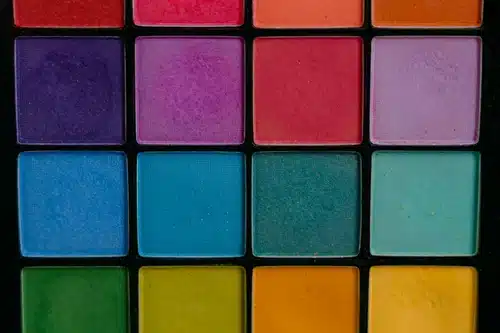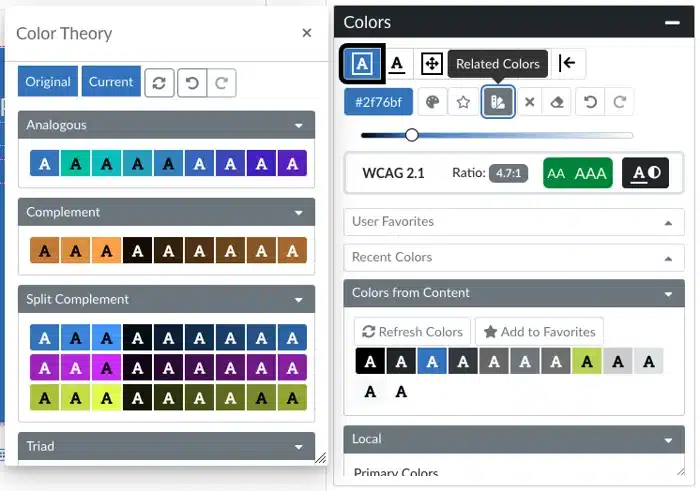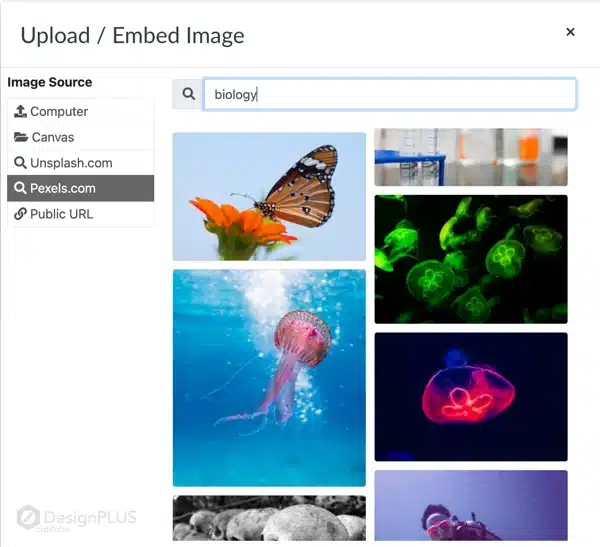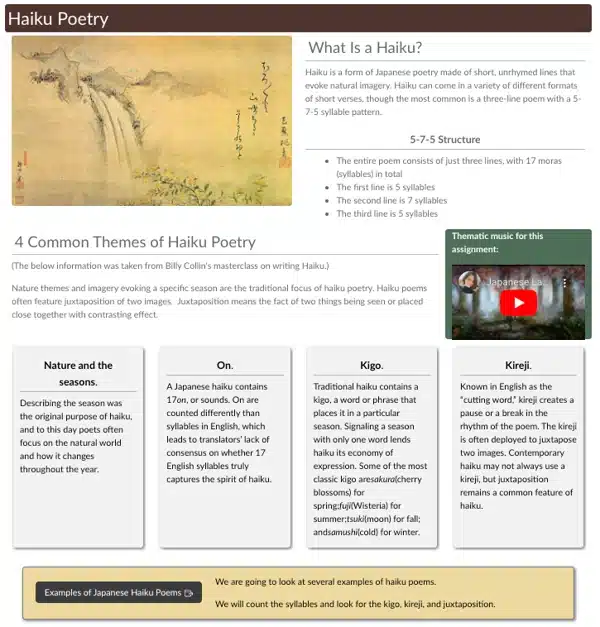Design Matters Digest: March Edition
Is it More Than Just a Pretty Course?

Welcome to the Design Matters Digest, a monthly newsletter that explores various elements of online course design and the research that can help you improve your Canvas courses. This month, we’re diving into the impact of visual design on learner engagement in online courses.
“Quality visual design piques interest, calls attention, and increases engagement and motivation while simultaneously improving communication, supporting cognitive processing of complex ideas, aiding retention, and fostering creativity.” (West et al, 2020)
What do we mean by visual design? Here we are referring to enhancing the aesthetic qualities of a course through the strategic use of images, colors, fonts, and layouts – among other elements.
But why does it matter? There are many reasons to focus on visual design, but we’d like to highlight the impact on learner motivation. The first element of Keller’s ACRS model of motivational learning (2020) is attention – our ability to capture and maintain a learner’s interest. The effective use of various visual design elements can increase learner motivation by evoking positive emotions, improving readability, and lowering cognitive load. In essence, when it is easier and more satisfying to absorb the content, learners are more likely to be motivated to engage.
Now, let’s take a look at some ways to effectively use visual design to increase learner motivation.
Add color for emotional response: Research suggests that the strategic use of color in course materials can positively influence learners’ emotional responses and attitudes toward learning. For instance, warm colors like red and orange are associated with energy and excitement, while cool colors like blue and green can evoke feelings of calmness and concentration. By selecting appropriate color schemes, designers can create a visually stimulating environment that fosters enthusiasm and focus.

Use images to break up text and create personal connection: We’ve all heard the adage that a picture is worth a thousand words, but images do more than simply replace words. Images, like colors, can evoke emotions and help learners create a personal connection with the content which can increase motivation and interest in learning. Additionally, images can break up text-heavy content, making the content easier to digest, which is more appealing to learners. For some great tips on how to use images in online learning, see this article.

Consider page layout including whitespace: Effective placement of content on a page can reduce cognitive load, improve readability and comprehension, and strategically focus attention (Dillon, 2004). When designing the layout of a page, use placement to prioritize important content, break up long text by visually chunking it into side-by-side groups, and guide the learner’s eye through the page with the use of whitespace.

Learn More: This understanding of the impact of visual design on learner engagement, motivation, and focus highlights the importance of having the right tools to help you embrace these concepts in your Canvas course designs. Join our free webinar tomorrow to see DesignPLUS from Cidi Labs in action, including tips for improving the visual design of your content –without having to know html or css!
If you are a course designer or educator who has faced a Canvas page and wondered, “How will I fit this all here?” we’ve got an event for you! Cidi Spotlight will quickly highlight the tools that can help you organize, chunk, and design your content into accessible, engaging formats that learners and faculty love. Cidi Labs’ instructional designers will walk you through how to accomplish professional and visually stunning-looking pages without having to know HTML. We’ll be highlighting features from DesignPLUS, a suite of simple yet powerful Canvas course design tools from Cidi Labs. You’ll see the new columns tool, tabs, accordions, and more! Take 30 minutes to learn with us on Tuesday, March 19th, from 10-10:30am MT.
You May Also Be Interested In...
Citations:
West, D., Allman, B. , Hunsaker, E., & Kimmons, R. (2020). Visual Aesthetics: The Art of Learning. In R. Kimmons & S. Caskurlu (Eds.), The Students’ Guide to Learning Design and Research. EdTech Books. https://edtechbooks.org/studentguide/visual_aesthetics.
Chang, Bo; Xu, Renmei; and Watt, Tiffany (2018). “The Impact of Colors on Learning,” Adult Education Research Conference. https://newprairiepress.org/aerc/2018/papers/30
Dillon, A. (2004). Designing Usable Electronic Text: Ergonomic Aspects Of Human Information Usage (2nd ed., illustrated, revised). Taylor & Francis.
eLearning, C. (2020). ARCS model of motivational design. In eLearning 2020: A comprehensive guide to online education. Pressbooks. Retrieved from https://pressbooks.pub/elearning2020/chapter/arcs-model-of-motivational-design/
Rune Pettersson & Maria D. Avgerinou (2016) Information design with teaching and learning in mind, Journal of Visual Literacy, 35:4, 253-267, DOI: 10.1080/1051144X.2016.1278341
Eger, L. (2018). How people acquire knowledge from a web page: An eye
tracking study. Knowledge Management & E-Learning, 10(3), 350–366.



